1. Glen Haven, Michigan
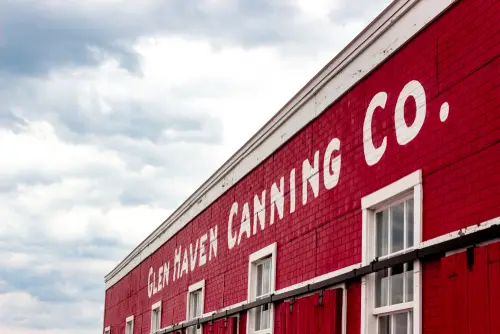
Blink and you’ll miss Glen Haven in summer—it’s just a handful of restored buildings near Sleeping Bear Dunes. But it’s alive then, with families exploring the maritime museum, kids chasing waves, and old-time music floating from open doors. By November, the tourists vanish, and the tiny village slips back into its 19th-century hush. It feels like a stage set waiting for its actors to return.
When the snow piles high, the roads are quiet and the lake is steel gray. You can almost imagine the ghost of a lumberman trudging past the old blacksmith shop. It’s the kind of place that reminds you nature, not people, calls the shots on the Great Lakes. And that’s part of its charm.
2. Port Oneida, Michigan
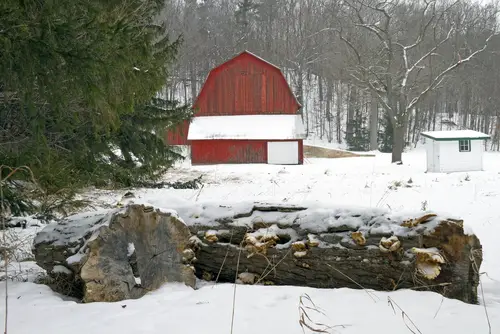
Port Oneida looks like it’s been frozen in time—and come winter, that’s not just a figure of speech. In summer, visitors wander its historic farms, restored barns, and heritage fields. The hum of lawnmowers and the smell of hay make it feel alive again, if only briefly. But when the snow falls, it’s as though the settlers packed up yesterday and never came back.
The silence here is cinematic: barns creak, fields lie still, and the lake wind cuts through the trees. There are no events, no crowds, just the ghosts of old farmers and lake breezes. The whole district goes into hibernation. It’s hauntingly beautiful—and totally deserted.
3. Grand Marais, Minnesota
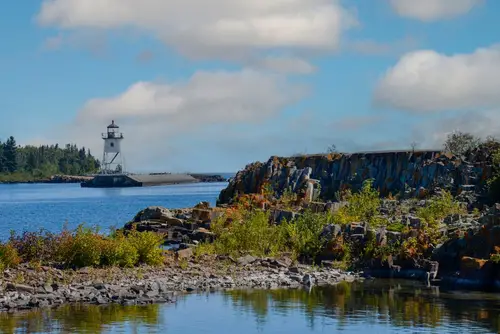
Summer in Grand Marais feels like an arts festival that never ends. The lake glitters, the boardwalk buzzes, and every café spills out with hikers and painters. Then comes winter, and Lake Superior takes over the soundtrack. The waves crash, the air bites, and suddenly, the streets go still.
The galleries close or scale back, and the only lights you see at night belong to the die-hard locals. The lake freezes at the edges, boats are pulled, and silence drapes over the harbor. It’s not abandoned, but it feels like the world has stepped away for a moment. The hush here is almost sacred.
4. Lake Placid, New York
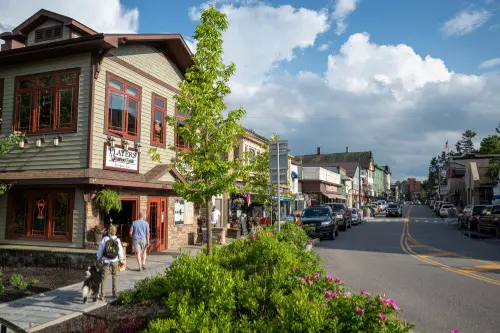
When summer hits, Lake Placid is all paddleboards, patios, and vacationers chasing that Adirondack dream. You can barely find a spot to park, and Mirror Lake is dotted with kayaks and canoes. But when the leaves fall and the last race is over, the lakeside turns almost eerily calm. Shops shutter, docks sit empty, and you can hear your boots crunch on the snow instead of the hum of outboards.
Winter here isn’t truly dead—it just belongs to a different kind of crowd. Locals and athletes still ski and train, but the water itself goes silent. If you stroll the frozen shoreline in February, you’ll feel like you’ve stumbled into an Olympic ghost town. It’s beautiful, haunting, and oddly peaceful.
5. Wolfeboro, New Hampshire
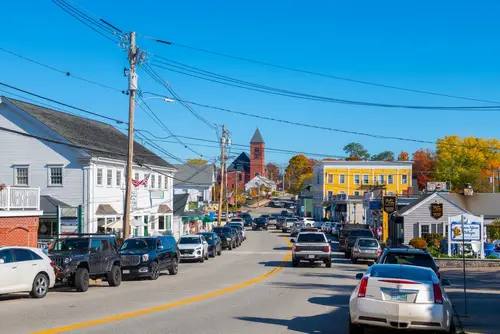
In July, Wolfeboro on Lake Winnipesaukee is pure Americana—boats chugging by, kids licking ice cream cones, and laughter echoing off the docks. The lake is the heartbeat of the town. Come December, though, that pulse slows to a whisper. The boats vanish, shutters close, and the only sound is the crackle of ice forming on the water.
Locals stay, of course, but it feels like everyone else packed up and left for warmer shores. The marinas are ghostly, the air smells like wood smoke, and you can walk the entire waterfront without seeing a soul. It’s the kind of quiet that makes you realize why summer here feels so electric—it’s fleeting.
6. Bigfork, Montana
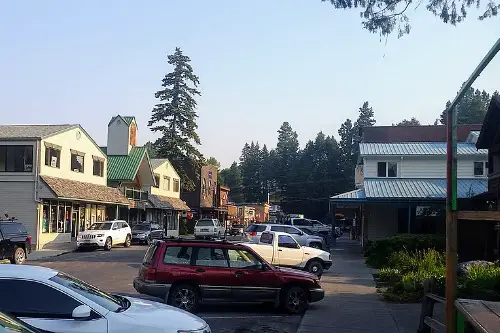
Bigfork is all about art fairs, lake breezes, and live music when Flathead Lake sparkles under the July sun. The little downtown hums, galleries overflow, and every deck chair seems occupied. Then winter comes, and the energy just… disappears. The lake freezes over, the streets empty, and you could practically roll a snowball down the middle of Electric Avenue.
Locals call it “the great exhale.” Restaurants shorten hours, the theater dims its lights, and Bigfork settles into its sleepy rhythm. It’s not sad, though—it’s serene, like the town’s taking a long nap. You can almost hear the echo of last summer’s laughter bouncing off the frozen shore.
7. Saugatuck, Michigan
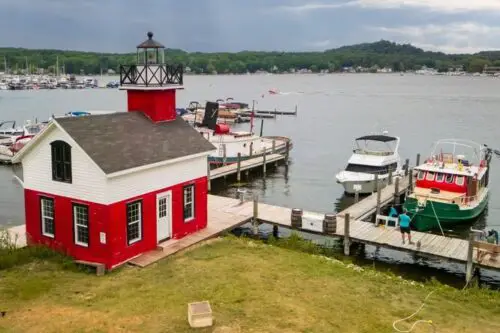
If you’ve been to Saugatuck in July, you know it’s an artist’s dream: sailboats, beaches, outdoor concerts, and the scent of sunscreen in the air. It’s one of those small towns that feels like summer itself. But when the cold hits the dunes, the color drains out fast. Shops close, cottages darken, and the marina turns into a ghostly forest of empty slips.
The locals stick around, but even they talk softer in winter. You’ll find a handful of bars open, maybe a gallery or two—but the crowds are gone. It’s the kind of stillness that makes you realize how temporary summer feels on the Great Lakes. And yet, that silence has its own pull.
8. Sandpoint, Idaho

Sandpoint on Lake Pend Oreille is pure magic in summer: sailboats everywhere, live music downtown, and sunsets that stop you mid-conversation. But by late fall, the air turns sharp, the marinas go quiet, and the lake takes back its space. The same boardwalk that felt alive in August now crunches under snow. Even the gulls seem fewer.
The ski crowd heads up to Schweitzer Mountain, but down by the water, it’s just you and the wind. The lakefront condos look empty, their decks stacked with snowdrifts instead of beach towels. Sandpoint doesn’t die in winter—it just becomes contemplative. You can almost hear the ice whisper.
9. Chelan, Washington
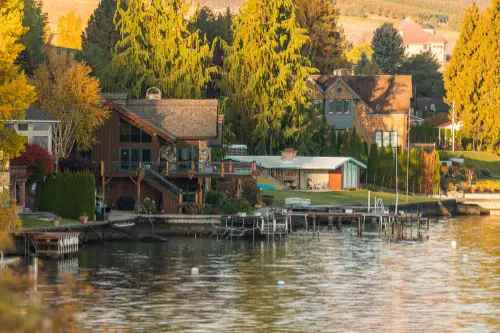
Chelan’s summer is all wineries, beach towels, and boat wakes on the water. You can sip wine with your toes in the lake and watch sunset turn the hills gold. But come winter, the water’s calm, and so is everything else. The ferries stop running, the patios are empty, and the laughter fades to memory.
Locals enjoy the peace, but it can feel like a different planet compared to July. The shops close early, the docks groan under frost, and the hills above the lake go quiet. It’s haunting, in the best way—like the town’s catching its breath. When spring hits, it wakes up as if nothing happened.
10. Lakehead, California (Shasta Lake)
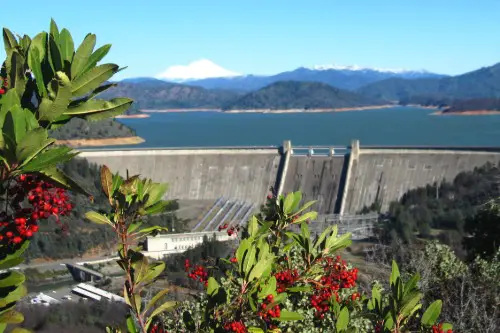
Shasta Lake in summer is all engines, laughter, and the smell of barbecue drifting across the water. Houseboats fill the marinas, and weekends are one long floating party. Then November hits, and suddenly, it’s all gone. The boats are pulled, the campsites empty, and fog curls over the quiet coves.
Locals know the drill—it’s just the lake resting. The silence is startling if you’ve only seen it at full capacity. Walking the shore in winter feels like visiting an old amusement park in the off-season. The ghosts of summer are everywhere, but they’re sleeping.
11. Tahoe City, California
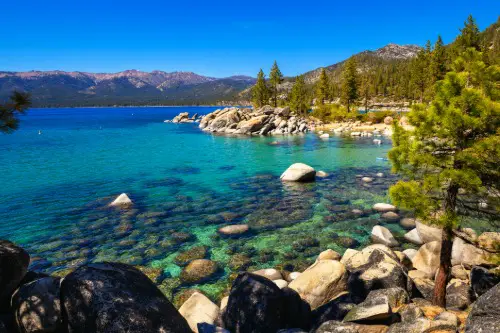
Tahoe City lives two lives: one on the lake and one on the slopes. In summer, the waterfront’s the star—kayaks, paddleboards, and lakeside brunches everywhere. But once snow blankets the Sierra, the water loses its audience. The marinas sit empty, and the docks creak under frost.
Sure, skiers keep the town alive, but the lake itself feels abandoned. It’s a strange inversion—life moves uphill while the waterfront goes mute. Even the air smells different: less sunscreen, more pine smoke. The lake just waits, patient and still, for its turn again.
12. Coeur d’Alene, Idaho
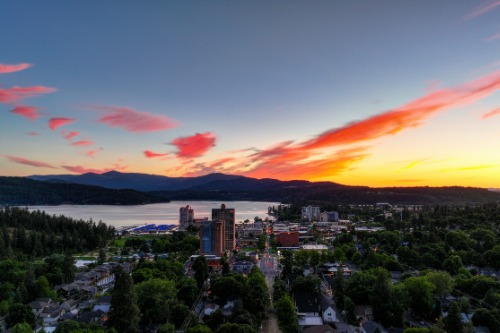
In July, Coeur d’Alene is a postcard—glassy water, busy boardwalks, and floating restaurants full of laughter. The whole city orbits its lake. But when the cold comes, the marinas empty, and the floating decks are pulled for the season. Suddenly the shoreline feels oversized, too quiet for its own good.
Locals call it “the great pause.” The lake’s beauty doesn’t fade—it just grows still, the reflections sharper, the colors colder. Walking there in January feels like trespassing in someone else’s summer dream. It’s haunting, but in the best way.
13. Grand Lake, Colorado
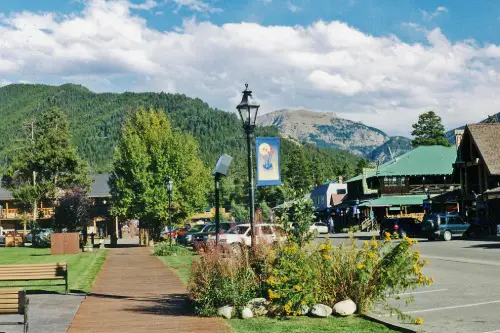
In summer, Grand Lake looks like a vintage postcard: boats drifting past log cabins, kids diving off docks, ice cream melting faster than you can eat it. By November, it’s a ghost of itself. The lake freezes, the boats vanish, and the boardwalk is dusted with snow instead of sand. Only a few shop lights flicker through the dark.
There’s still life—snowmobilers, cross-country skiers—but the lake itself feels like it’s holding its breath. Every sound carries farther, every gust of wind feels louder. It’s Colorado’s prettiest ghost village each winter. And that’s not an exaggeration.
14. Silver Bay, Minnesota
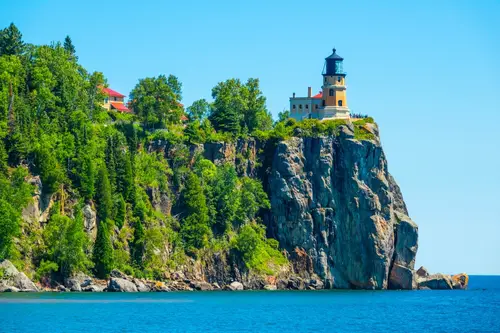
Silver Bay is more rugged than resorty, but summer still brings kayakers, hikers, and campers chasing Lake Superior views. The trails hum with voices and the lake smells alive. Then, as winter rolls in, everything changes. The water darkens, the wind howls, and the town goes into quiet mode.
It’s not that people disappear—it’s that the energy does. The shore feels enormous and empty, like nature reclaimed it overnight. Snow drapes the harbor and turns every sound into a muffled echo. For a few months, Silver Bay becomes a place the world forgets.
15. Skaneateles, New York

Skaneateles in summer is storybook perfect: sailboats gliding, musicians on the pier, and ice cream dripping down your wrist. The little Finger Lakes village is alive with energy. But once the boats are stored and the tourists head home, the water takes on a mirror-still quiet. The shops stay open, but the lakeside itself feels deserted.
That’s not to say it’s bleak—it’s stunning in a softer, lonelier way. The lake steams in the morning chill, and the streets echo under holiday lights. Locals sip coffee where crowds once stood, enjoying the peace. It’s proof that beauty doesn’t disappear when summer does—it just whispers instead of shouts.
This post 15 American Lakeside Towns That Turn Into Ghost Villages Each Winter was first published on American Charm.


